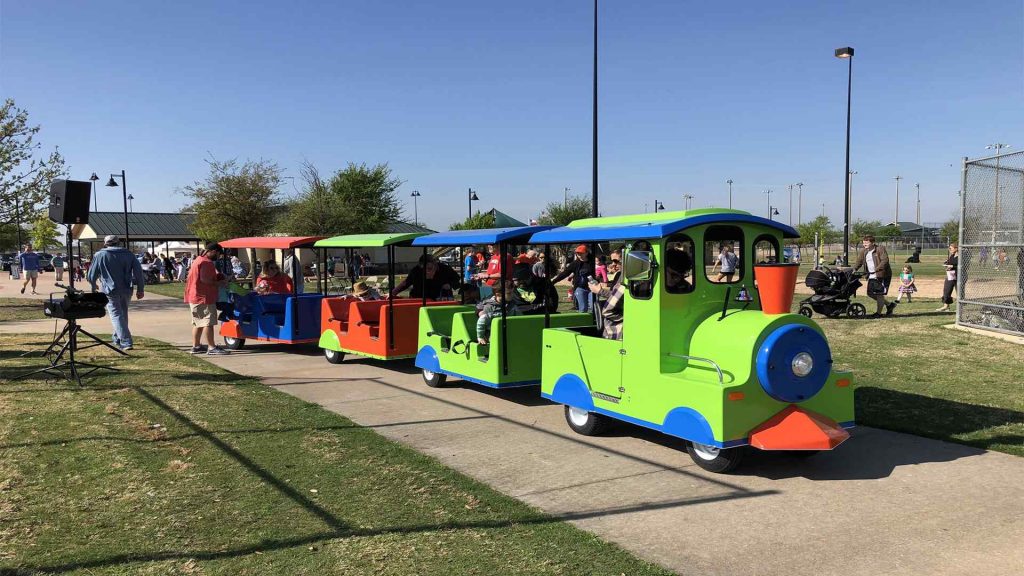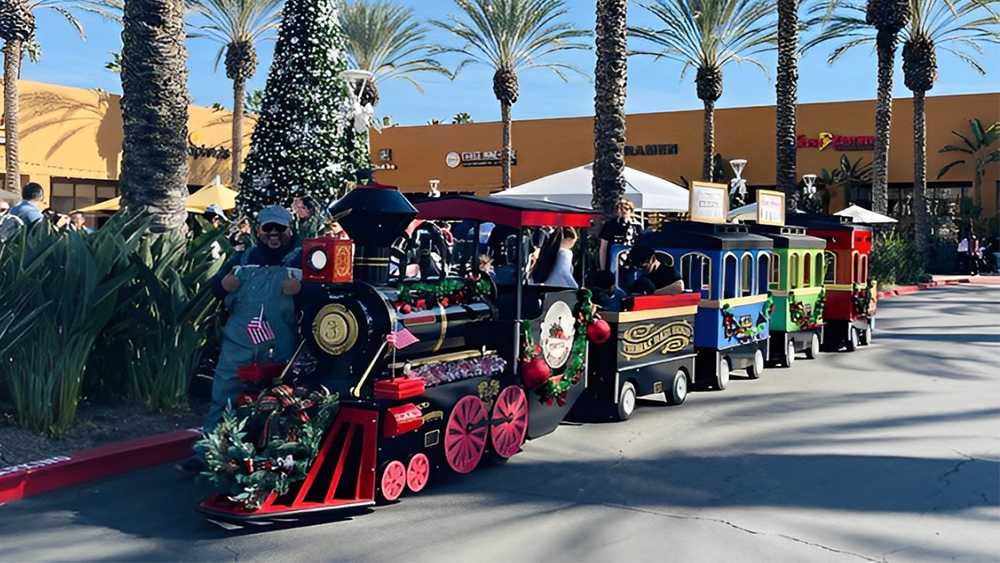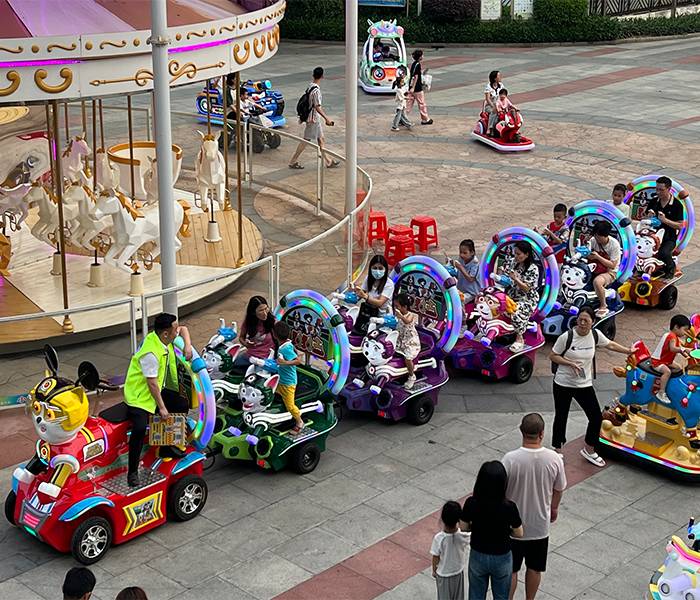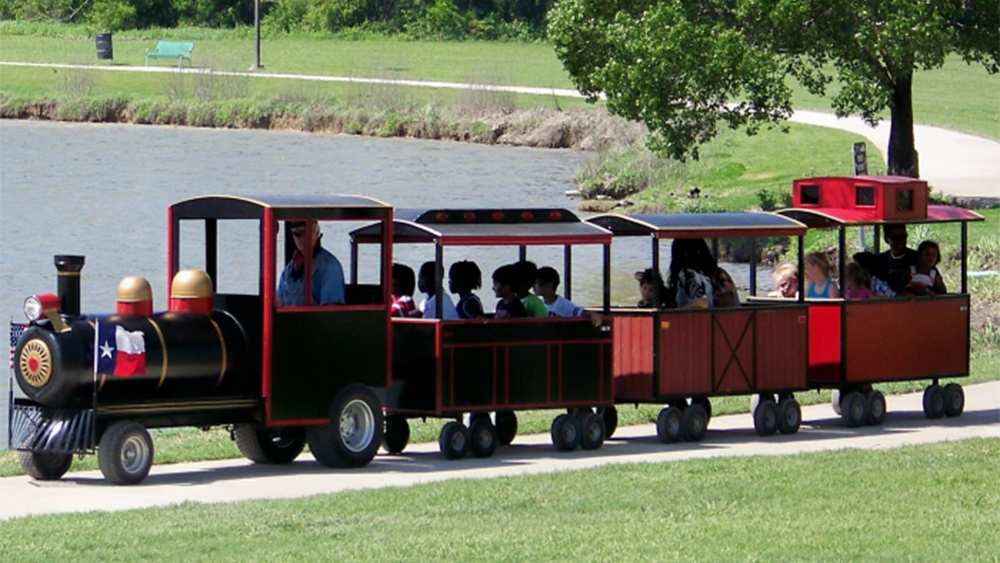Maintaining a trackless train is crucial for its longevity and safety. Here are some essential maintenance tips:
- Regular Inspections: Routinely check the functions and operations of the trackless train. Examine both electrical and mechanical components to catch any problems early, which can help avoid costly repairs.
- Keep the Train Clean: Regular cleaning is necessary to remove dirt, grease, dust, and smudges. Wash the train with lukewarm, pressurized water and use a soft cloth for thorough scrubbing. You can also use cleaning chemicals, but ensure they are safe for materials like steel or fiber-reinforced plastic (FRP).
- Control Usage: Ensure that only trained and experienced personnel operate the train. During non-operational times, unauthorized access should be strictly prohibited.
- Follow Operational Procedures: Adhere to the manufacturer’s recommended operating procedures to prevent malfunctions or damage.
- Assess Functionality and Performance: Continuously monitor the train’s performance during operation. If any unusual behavior is detected, stop the ride immediately and address the issue.
- Hire Qualified Staff: Employ a well-trained team responsible for the train’s operation, maintenance, cleaning, inspection, and repair.
- Replace Worn Parts: Regularly check and replace any parts that show signs of wear before they fail.
Table of Contents
- 1 How to Repair Trackless Trains
- 2 Trackless Train Manufacturers in China
- 3 Packing of Trackless Trains
- 4 Main Parts of Trackless Trains
- 5 Factors to Consider When Buying a Trackless Train
- 6 Checking the Quality of a Trackless Train
- 7 Can Trackless Trains Be Used for Business?
- 8 Manufacturer Responsibility for Damages
- 9 Delivery of Trackless Trains from China
- 10 Materials Used in Trackless Trains
- 11 Voltage for Electric Trackless Trains
- 12 Do Trackless Trains Have a Steering Wheel?
- 13 Weight Capacity of Trackless Trains
- 14 Do Trackless Trains Have a Roof?
- 15 Do Trackless Trains Have Suspension?
- 16 History of Trackless Trains
How to Repair Trackless Trains
To repair trackless trains, you should have a team of trained engineers who can inspect and maintain the train regularly. If an issue arises that is beyond their expertise, you can request assistance from the manufacturer, who may provide repair services. If the train is still under warranty, these repairs might be covered.
Trackless Train Manufacturers in China
China has many trackless train manufacturers, but it’s essential to choose a reputable one like Sinorides, which has over 28 years of experience, IAAPA membership, and over 200 patents in amusement rides. Sinorides offers high-quality materials, professional after-sales services, and a one-year product warranty.

Packing of Trackless Trains
Trackless trains are packed with care to ensure safe delivery. Each component is wrapped in plastic and placed inside wooden boxes, which are labeled for proper handling during shipment. However, packaging standards may vary by manufacturer.
Main Parts of Trackless Trains
A trackless train consists of a locomotive and one or more carriages. The locomotive is powered by either a combustion engine or an electric motor with batteries.
Factors to Consider When Buying a Trackless Train
- Material: Ensure the use of high-quality materials like stainless steel, wood, and fiber-reinforced plastic (FRP).
- Manufacturer Reliability: Look for manufacturers with experience, certifications, state-of-the-art machinery, and a proven track record.
- Design and Theme: Choose a design and theme that will attract visitors, including additional features like sound systems, LEDs, and smoke effects.
- Seating Capacity: Select a train with a seating capacity that matches your expected visitor numbers.
- Safety: Ensure the train is equipped with reliable safety features such as braking systems, emergency stops, seatbelts, fire extinguishers, and safety nets.
- Comfort: Consider the comfort of both the driver and passengers when selecting a train.

Checking the Quality of a Trackless Train
To assess the quality of a trackless train, consider the following:
- Performance and Functionality: Observe the train’s operation to ensure all features are functioning correctly.
- Material: Check for high-quality materials like stainless steel and FRP.
- Design and Detailing: Examine the accuracy of the design, detailing, and paintwork.
- Manufacturer: Ensure the manufacturer has the necessary experience, certifications, and compliance with safety standards.
Can Trackless Trains Be Used for Business?
Yes, trackless trains can be used in amusement parks, theme parks, shopping malls, and carnivals, and they can also be rented out for events.
Manufacturer Responsibility for Damages
Manufacturers are not responsible for damages after the train is delivered to its owner unless the damage occurred during shipment managed by the manufacturer.

Delivery of Trackless Trains from China
Not all manufacturers deliver trackless trains internationally, but companies like Sinorides offer comprehensive services, from selection and customization to delivery.
Materials Used in Trackless Trains
Trackless trains are typically made from stainless steel, wood, and fiber-reinforced plastic (FRP).
Voltage for Electric Trackless Trains
Standard electric trackless trains are equipped with a 48-volt motor.
Do Trackless Trains Have a Steering Wheel?
Yes, human-operated trackless trains have a steering wheel on the locomotive.
Weight Capacity of Trackless Trains
The weight capacity of a trackless train depends on its carriages. A standard carriage with a seating capacity of four people can hold up to 250 lbs.
Do Trackless Trains Have a Roof?
Most trackless trains are equipped with a roof, though not all.

Do Trackless Trains Have Suspension?
Yes, trackless trains are equipped with leveling suspension in their locomotives and carriages.
History of Trackless Trains
The first trackless train was built in 1917 by the Henry O McGee Manufacturing Company in Indianapolis. It was designed as a new form of transportation, with its chassis sourced from manufacturers like Dagmar, Graham-Paige, and Cord. The train was used by various companies and film studios, including Metro-Goldwyn-Mayer, which leased it for a three-year world tour beginning in 1925.
This summary covers essential information on the maintenance, purchase, and use of trackless trains, along with their history and other practical details.
